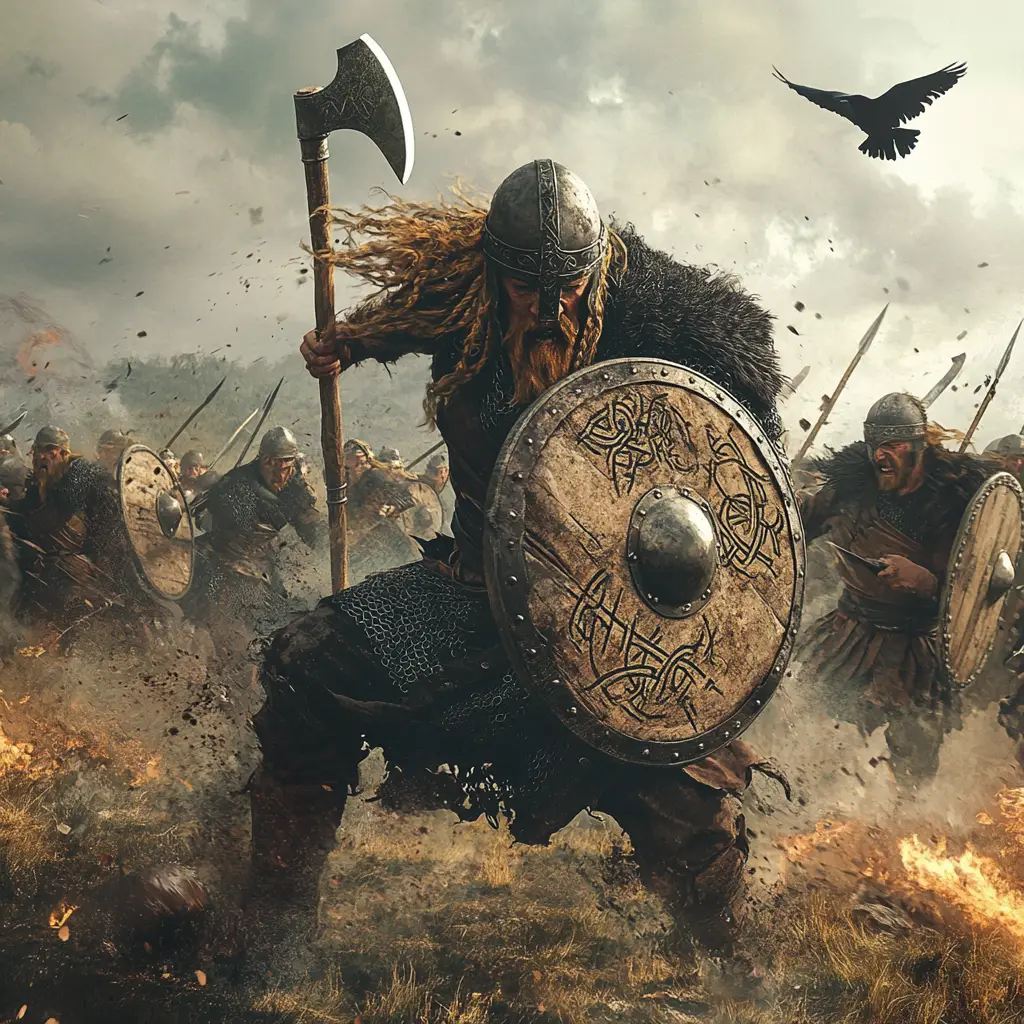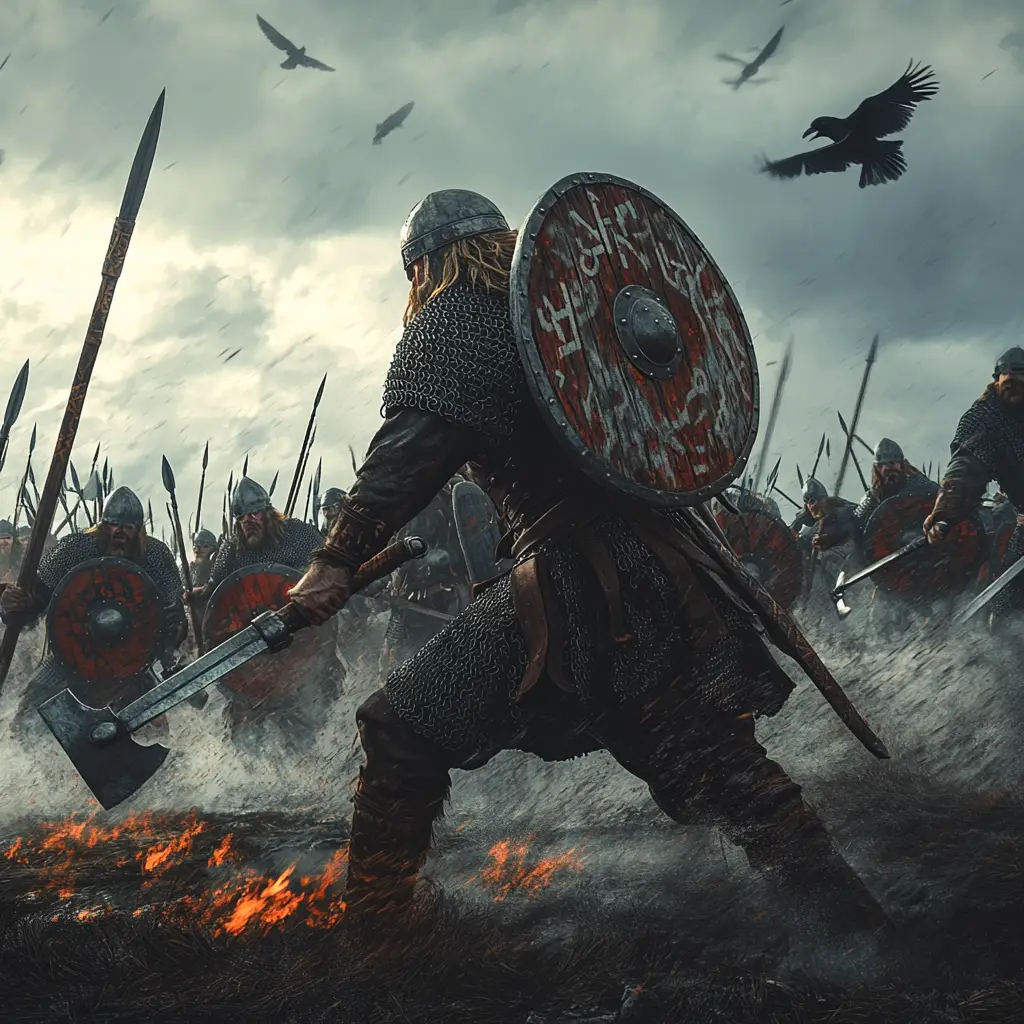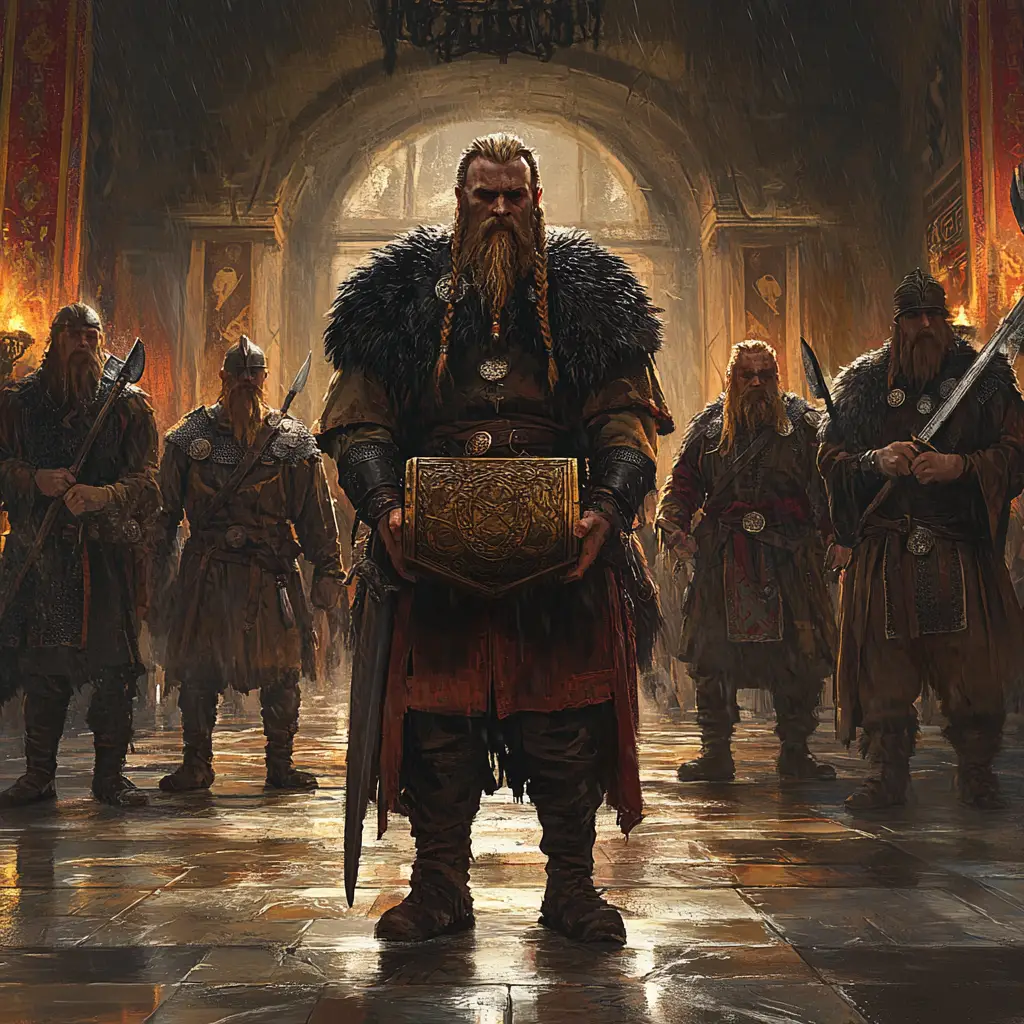Viking mercenaries, often referred to as Varangians, Vikings-for-hire, or simply Norse warriors, were renowned throughout the medieval world for their fighting prowess and willingness to serve as hired soldiers. Their reputation for brutality, fearlessness, and loyalty (if paid well) made them highly sought after by rulers and states across Europe, Byzantium, and beyond.
Characteristics of Viking Mercenaries
Motivation:
Many Vikings sought service as mercenaries to gain wealth, status, and adventure.
Service as a mercenary was often seen as a practical alternative to raiding or farming, especially for younger sons without inheritance.
Equipment and Skills:
Viking mercenaries were typically well-armed and armoured, wielding axes, swords, and shields, with chainmail or helmets for protection.
They were highly skilled in naval warfare, hand-to-hand combat, and hit-and-run tactics, making them versatile on both land and sea.
Loyalty:
While they were loyal as long as they were well-compensated, Vikings were pragmatic and could switch sides if better offers arose.
Their honor as warriors often tied them to their employer unless betrayed or poorly treated.
Notable Instances of Viking Mercenaries
The Varangian Guard:
Perhaps the most famous group of Viking mercenaries, the Varangian Guard, served as an elite unit of bodyguards for Byzantine emperors in Constantinople.
These Norse warriors, primarily Swedes, Norwegians, and Danes, were recruited for their loyalty and fighting skill.
They were known for their fearlessness in battle and wielded fearsome Danish axes.
Service in the Varangian Guard was prestigious, and many returned to Scandinavia wealthy and influential.
Anglo-Saxon England:
Viking mercenaries frequently fought in England, often switching allegiances between Saxons, Danes, and other competing factions.
During King Æthelred the Unready’s reign, Vikings were sometimes hired to repel other Viking invaders, a strategy that often backfired.
Ireland:
Viking mercenaries played a significant role in Irish conflicts, offering their services to competing Irish kings during their internal power struggles.
The Vikings established fortified bases like Dublin, which became hubs for mercenary activity.
France and the Frankish Empire:
Viking warriors were hired by Frankish rulers to protect their territories against other Viking raids.
The Treaty of Saint-Clair-sur-Epte (911) granted the Viking leader Rollo land in Normandy in exchange for protection and loyalty, creating a powerful base for Viking mercenaries.
Kievan Rus’:
Viking mercenaries, often referred to as Varangians in this region, were instrumental in the formation of the Kievan Rus’ state.
They served as military leaders, traders, and bodyguards for local rulers.
Famous Viking Mercenaries and Leaders
Harald Hardrada:
Before becoming King of Norway, Harald served in the Varangian Guard, amassing wealth and experience.
His exploits in Byzantium and elsewhere are legendary, earning him a reputation as one of the greatest Viking warriors.
Ivar the Boneless:
Known for his cunning and leadership, Ivar is thought to have led mercenary campaigns, including raids and alliances in England and Ireland.
Rollo of Normandy:
A Viking leader who became the first ruler of Normandy by negotiating with Frankish rulers. His descendants, including William the Conqueror, carried Viking military traditions forward.
The Legacy of Viking Mercenaries
Cultural Exchange:
Viking mercenaries contributed to cultural exchange, bringing Norse traditions, language, and military tactics to the regions they served.
Military Influence:
Their strategies, including the use of shield walls and naval tactics, influenced European military practices.
Economic Impact:
Many Vikings returned to Scandinavia with wealth and goods, boosting local economies and funding further expeditions.
Integration:
Over time, Viking mercenaries integrated into the societies they served, leaving a lasting impact on local cultures, especially in places like Normandy and the Kievan Rus’.



